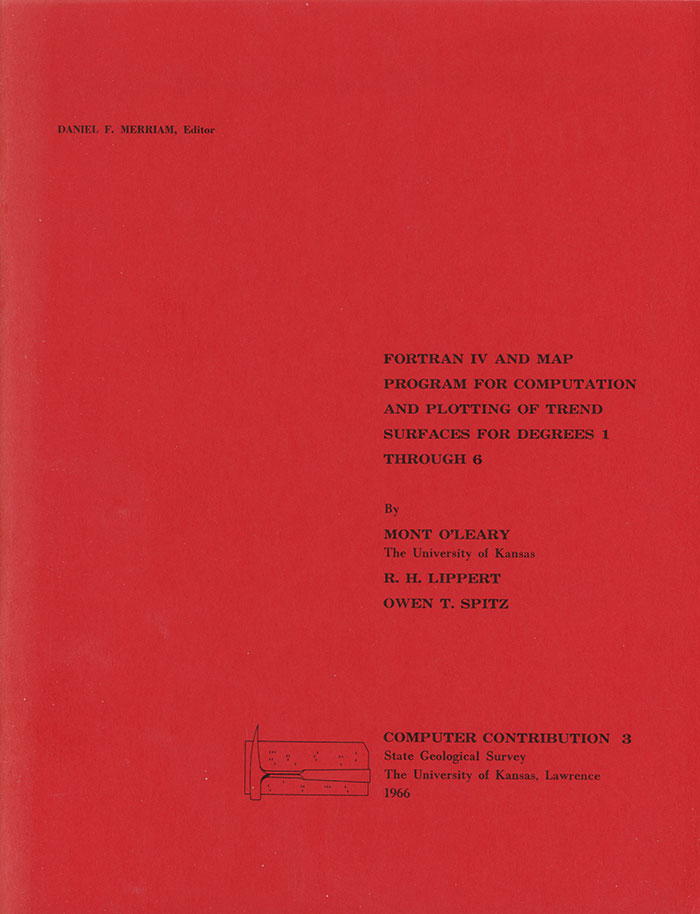
Kansas Geological Survey, Computer Contributions 3, originally published in 1966
1University of Kansas, 2Shell Oil Co., and 3Kansas Geological Survey

Originally published in 1966 as Kansas Geological Survey Computer Contributions 3.
The original version of this program was published by John W. Harbaugh (1963) in BALGOL for the IBM 7090. In late 1963, Donald I. Good translated the program into FORTRAN II for the IBM 1620, but vast differences in language and hardware necessitated a complete rewriting. Good's program was published in 1964 as Kansas Geological Survey Special Distribution Publication 14. Shortly after publication of this program, The University of Kansas replaced the 1620 with a larger IBM 7040. In September, 1964, Owen T. Spitz converted the program to FORTRAN IV, revising it to its present two-link chain program form for adaptation to the IBM 7040 with 16 K.
The program described herein is a further modification of Good's program which exploits the speed and additional core storage of the IBM 7040. Polynomial surfaces (trend surfaces) are fitted up to sixth degree. Double precision arithmetic has been introduced into the program to reduce "roundoff error," and the capacity of the program has been expanded to a maximum of 500 data points.
Whereas the organization of the program has been greatly modified, the mathematical and computational structure of the program is essentially as described in Good (1964). Input and output are almost identical to those of the original program, and sizable portions of the documentation described herein are taken in their entirety from Good (1964).
A number of papers have appeared which deal with application of trend surfaces to geologic and geochemical data (Allen and Krumbein, 1962; Connor and Miesch, 1964; Krumbein, 1956, 1959; Miller, 1956; Whitten, 1959, 1961). Most of these papers deal with trend surfaces applied to petrologic data or facies data. However, Forgotson (1963), Merriam (1964), Merriam and Harbaugh (1964), and Wolfe (1962) suggest that trend surfaces fitted to structural data might aid in mineral exploration. Trend-surface computer programs available to the public have been written by Harbaugh (1963, 1964a, 1964b), Mcintyre (1963), Peikert (1963), and Whitten (1963).
Card decks of the FORTRAN IV source programs, MAP subroutines, a sample data set with control cards, and a FORTRAN IV source program for determining numeric equivalents of plotting symbols may be obtained for a limited time from the Kansas Geological Survey for $25.00
The authors express their appreciation to Donald I. Good for advice during the revision, to Fred Long for MAP subroutines OCV, LCV, DCV, and GCV, and to Gary Shilling of The University of Kansas Computation Center for providing the SHARE programs, IORED and modified POSTX, which were developed by the University of Utah Computation Center, Salt Lake City, Utah. The University of Kansas Computation Center, Dr. R. G. Hetherington, Director, provided computer time to develop the program.
Read the PDF version (4.6 MB)
Kansas Geological Survey
Placed on web Aug. 26, 2019; originally published 1966.
Comments to webadmin@kgs.ku.edu
The URL for this page is http://www.kgs.ku.edu/Publications/Bulletins/CC/3/index.html